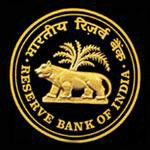The Reserve Bank of India (RBI) has decided to hold policy rates in its bi-monthly monetary policy review, the first after the new government took over, on Tuesday, as widely anticipated.
As a result, the policy repo rate under the liquidity adjustment facility (LAF) remains unchanged at 8 per cent and the cash reserve ratio (CRR) of scheduled banks also stands unchanged at 4 per cent of net demand and time liability (NDTL). Consequently, the reverse repo rate under the LAF will remain unchanged at 7 per cent, and the marginal standing facility (MSF) rate and the bank rate at 9 per cent.
RBI noted that in March and April, consumer inflation rose on the back of a sharp increase in food prices. “The risks to the central forecast of 8 per cent CPI inflation by January 2015 remain broadly balanced. Upside risks in the form of a sub-normal/delayed monsoon on account of possible El Nino effects, geo-political tensions and their impact on fuel prices, and uncertainties surrounding the setting of administered prices appear at this stage to be balanced by the possibility of stronger government action on food supply and better fiscal consolidation as well as the pass through of recent exchange rate appreciation,” it said.
Accordingly, at this juncture, it is appropriate to leave the policy rate unchanged, and to allow the disinflationary effects of rate increases undertaken during September 2013-January 2014 to mitigate inflationary pressures in the economy, RBI said on Tuesday.
It also decided to reduce the statutory liquidity ratio (SLR) of scheduled commercial banks by 50 basis points from 23 per cent to 22.5 per cent of their NDTL with effect from the fortnight beginning June 14, 2014.
The central bank said this will give banks more freedom to expand credit to the non-government sector.
It added that it remains committed to keeping the economy on a disinflationary course, taking CPI inflation to 8 per cent by January 2015 and 6 per cent by January 2016.
“If the economy stays on this course, further policy tightening will not be warranted. On the other hand, if disinflation, adjusting for base effects, is faster than currently anticipated, it will provide headroom for an easing of the policy stance,” RBI said.
It cautioned that lead indicators point to continuing sluggishness in domestic economic activity in the first quarter of 2014-15 but added that the decisive election result, together with improved sentiment should create a conducive environment for comprehensive policy actions and a revival in aggregate demand as well as a gradual recovery of growth during the course of the year.
RBI retained its previous projection of real GDP growth of 5-6 per cent in 2014-15 with risks evenly balanced around the central estimate of 5.5 per cent, contingent to meeting inflation targets.
“The outlook for the agricultural sector is contingent upon the timely arrival and spread of the monsoon. Easing of domestic supply bottlenecks and progress in the implementation of stalled projects should brighten the outlook for both manufacturing and services. The resumption of export growth is a positive development and as world trade gathers momentum, the prospects for exports should improve further,” it said.
In the meantime, it also reduced the liquidity provided under the export credit refinance (ECR) facility from 50 per cent of eligible export credit outstanding to 32 per cent with immediate effect and introduced a special term repo facility of 0.25 per cent of NDTL to compensate fully for the reduction in access to liquidity under the ECR.
With a view to improving the depth and liquidity in the domestic foreign exchange market, RBI has also decided to allow foreign portfolio investors to participate in the domestic exchange traded currency derivatives market to the extent of their underlying exposures plus an additional $10 million. Furthermore, it has been decided to allow domestic entities similar access to the exchange traded currency derivatives market. It will come with detailed operating guidelines separately.
RBI has also raised the eligibility limit for foreign exchange remittances under the Liberalised Remittance Scheme (LRS) from $75,000 to $125,000 without end use restrictions except for prohibited foreign exchange transactions such as margin trading, lottery, etc.
The central bank also eased conditions for taking out Indian currency. At present, only Indian residents are allowed to take Indian currency notes up to Rs 10,000 out of the country. Non-residents visiting India are not permitted to take out any Indian currency notes while leaving the country.
“With a view to facilitating travel requirements of non-residents visiting India, it has been decided to allow all residents and non-residents except citizens of Pakistan and Bangladesh to take out Indian currency notes up to Rs 25,000 while leaving the country,” RBI said.
The third bi-monthly monetary policy statement is scheduled on Tuesday, August 5, 2014.
(Edited by Joby Puthuparampil Johnson)






